Courage

I have suddenly regained courage
Start from scratchOne
wonders how does such a thing
Where does this courage come from?
I live again, laugh again, whistle and sing
No more sigh and no more tear
And ah, that courage, to where
he went
Does he come from again.
Toon Hermans
Foreword
In this essay, as an adventure, we will deal with one of the four cardinal virtues, namely ‘courage’. As Franzeska Iseli, author of the glorious ‘The Courage Map’ puts it, ‘courage’ is one of the most powerful forces for shaping your life. Courage enables you to remain yourself, lead others by good example, be a positive influence and live without regret. Aristotle, the Father of Virtues called bravery the first virtue because it made all other virtues possible.

Both this person, and in his view the Dutch people, could benefit from braver behavior. Nevertheless, the Dutch people have traditionally behaved courageously in the face of the sea and water.
It is commendable that by taking on this adventure “boldly,” you are trying to strengthen virtue courage.
A simple, recent definition says that “courage” is a mental or moral strength to confront danger, fear or difficulty and to persevere in doing so.
In the treatment of virtues, in this essay we follow the more recent “approach of Seligman,” a scientific method for the classification of virtues. His classification (Values in Action, VIA) has six virtues, divided into 24 character strengths. Courage is one of the six VIA virtues. The other five are: knowledge & wisdom, justice, humanity, transcendence and moderation.
The VIA virtue courage itself has four character strengths, namely, bravery/daring, persistence, integrity, and vitality. For the present discussion of these four character strengths, we will keep the term bravery for a while, but later we will move on to the general concept of courage.
Courage is inspiring, attractive, ambitious and contagious. It is a skill that, no doubt about it on the part of experts, can be learned or strengthened. It’s a process that you need to maintain regularly, even daily if possible. Some experts say that to be productive, “courage” requires leadership and discipline. Others implicitly indicate (e.g. Iseli and Toon Hermans) that there is also a general courageous attitude to life that enables the possessor to undertake frequent and impromptu courageous initiatives.
Fear and courage are almost a couple: no courage without fear. Fear means not getting the most out of life. Approaching life courageously and lovingly can help replace fear with freedom, self-love, growth and compassion for others.
There is physical and there is moral courage. Physical courage, bravery, was the origin of the current concept of courage. Moral courage, according to Kidder, refers to the five values of honesty, respect, responsibility, compassion and justice.
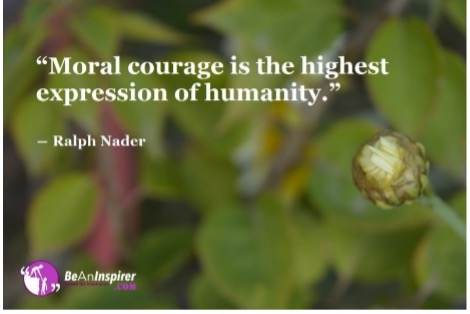
Courage is not always a virtue. To do so, it must be in the service of positive or moral ends. “Good courage” requires flexibility, endurance and resilience.
Introduction
This adventure “courage” presents itself in 11 scenes. Each addresses an aspect of the ability to increase courage.
There is a separate essay on ‘courage’ that is also on the website (in Dutch). It covers that virtue more extensively than this ‘adventure’ and can be read separately. We recommend reading the essay first before embarking on the adventure.
(N.B. Videos to open with right mouse button!!!)
Each scene is preceded by an introduction, which describes characteristics of the aspect. Each tableau is ‘enlivened’ by a proverb, a joke, a drawing or a poem. Each scene has one or more assignments, which allow you to develop habits to be braver in life.
Task: Awake with the intention of living the day boldly. For example, “Grateful am I that I may face this day as a challenge. Today I am not afraid of anything or anyone and I will live fully. Possibly I will make mistakes, but I will try to learn from them. With the attitude of gratitude, love and kindness there is little to fear, because I see everyone as my buddy. Exceptions will probably have a valid reason for their behavior. I am not perfect either and will offer understanding and help where possible”
‘Whatever you can do, or dream you can do, begin it. Boldness has genius, power, and magic in it. Begin it now’.
Goethe
Scenario 1. Ambition and intentions.
‘Everyone is necessarily the hero of their own life story’
John Barth
We all, consciously or unconsciously, want to be courageous in life. To live more boldly, more freely, without or with less fear. How do you do that?
Stories are an essential guide. They lend themselves perfectly to describing courageous events. They create beliefs, create habits, and lead to results. Stories are not necessarily accurate, but they are valuable. Stories are a kind of lens through which we look at the world. They largely determine whether we approach the world and life with courage or with fear. If we want to steer clear of negativism and view the world with more courage, we need possibly to reframe our stories. Stories apply not only to great deeds in the distant past, but also to simple, everyday events.
Video: The power of storytelling | Andrea Gibbs | TEDxPerth
Task 1: Make a draft of your “courageous” life story. Let it rest for a few days. Then reread it and reformulate it if you want a braver version.
If you want to become courageous, you need to expand your boundaries and comfort zones. When you’re too comfortable in your own skin, you often don’t make the extra effort: growth and comfort have a hard time going hand in hand. Practice going outside your comfort zones; consciously and continuously perform small acts of courage. Everyday altruism is the precursor to heroism. When you express yourself honestly and courageously, you increase your power; when you complain, you relegate yourself to victimhood!
Intentions are the source of behavior change that comes with the courage story. Are we indeed willing to take the bold step? Intentions, says Iseli, are incredibly powerful and are at the beginning of the development of greater courage. Those resolutions need to be aligned with your vision and your values.
Task 2: What intention could you make to shift your comfort zones? In what area (e.g., dealing with others, giving trust, speaking truth).
Self-confidence, trust in others, and trust in “providence” are important incentives, if not prerequisites, for courage. Further, integrity, strong beliefs, empathy, tolerance for ambiguity, objectivity, positivism, and self-efficacy also help. Courageous individuals are open to new experiences, thrive on adversity, and seek out a problem rather than turn away from it. Fear on the other hand weakens morale, damages relationships and erodes trust.
Task 3: Try to identify courageous role models in your community. These may include fellow students, family members, or neighbors.
Scene 2. Fear

“We must continually raise dikes of courage against the storm surges of fear.
Martin Luther King
Experts on the subject agree that there is no courage without fear. One must accept that fear and find ways to control it. Confronting fear is much better than going through life as a fearful person, always avoiding everything and everyone and always worrying that you are not doing things right. The essence of becoming courageous is to subject to the fear. In time that fear will disappear of its own accord and you will be free. If you avoid fears, there is a good chance that they will manifest themselves elsewhere, and possibly in a fiercer form.
Video: How to be brave. Margie Warrell,
There are various types of fear, for example, fear of taking initiative, of trusting others, of telling others the truth, of speaking in public. People who are afraid to do something often have little or no confidence; the lack of it manifests itself in various ways, such as procrastination, perfectionism, and impostor syndrome.
Justified fear tends to save us from a predicament. However, fear is not always legitimate. Sometimes it is excitement rather than a warning of real danger. Unnecessary fear leads to hesitation and hinders decisiveness.
Task 1: If you are regularly afraid, what is it for?
You can tame fear by normalizing it (if fear is openly admitted, it loses its potency), linking it to courage (no courage without fear; core attribute of courage) and using its energy against itself (fear has energy). Fear of something can be imagined as a tiger in a cage. The more dangerous the tiger, the stronger the cage must be. So instead of reducing your fear, you can also strengthen the tiger’s cage, your safety. Just like at the kermis and fair, you can turn fear into pleasure.
Fear is almost always an opportunity to learn and grow.
Unanimous advice from all experts in the field: do what you fear and keep doing it. Inaction breeds doubt and fear.
By improving your lifestyle, including physical exercise, you can increase your courage; a well-functioning body gives natural swing and guts.
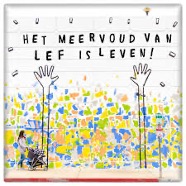
Task 2: try to control moments of fear through meditation, yoga, mindfulness and breathing techniques. After all, anxiety is primarily basic and cannot be reasoned with and controlled by your mind. By calming down through breathing exercises, you induce the body to relax.
Task 3: . Do physical exercises in the morning and then several times a day; a fit body stimulates: ‘guard against lazy bones!’
Afraid
I am not afraid of losses
I’m not afraid of flopping
For hits nor for kicks
For punching my cheek
I don’t want to hear another word
From fear of worry and pain
I’ve lost too much already
With blunt fear
My courage was only very poor
My guts were false pretenses
I have no time left now
To be afraid of anything
Now I want to live freely
If possible for a very long time
I can’t be broken
That’s because: I’m not afraid.
Toon Hermans
Scenario 3. Risks and Imperfection
‘If you dare, your courage grows. If you hesitate, your fear grows’
Forpositivity.com
New initiatives, giving trust, speaking the truth, and other intentions usually involve risk. You need courage to overcome the fear of failure of those risks. Taking initiatives in business, such as founding or expanding a business is a typical example of the courage-form “initiative”.
Video: Take the risk
According to Iseli, taking risks is one of the four main conducts of courage (other three: being true to one’s principles and values, tackling problems decisively, and leading by example). Without a sense of danger, risk, or vulnerability, there is no courage in an action. The disadvantages may be greater or lesser. Those risks can take many forms: loss of job or friends, loss of income, being embarrassed, making enemies, losing status and being ostracized from a group, for example, in the case of a whistleblower. The consequences can be short or long term. Consequently, assessing the risks and planning for obstacles are an essential part of courageous intentions.
Task 1: Check with yourself how you stand on risk-taking. Does this vary according to the moral courage segment (innovation, personal or business; trusting, or speaking candidly?) Does this match your courage story at the beginning?
True courage, like all other virtues, turns out to be a balanced phenomenon. How the situational judgment turns out, depends on another virtue: prudence. Courage without prudence is foolishness. (Becker/Hoekstra)
Mindful of Aristotle’s criterion that virtue is the midpoint of two extremes, courage is flanked by action shyness and cowardice on one side and by rashness and recklessness on the other.
The safer people feel, the more risks they dare to take. Therefore, it is advisable to put safeguards and a safety net in place. That net can consist of gained familiarity with the situation, better knowledge of the problem, support from others and daring to make ‘good’ (= best efforts, bad results) mistakes. It can be useful to develop scenarios; among other things, you may imagine the worst that could happen, even in the absence of any action.
Many people strive to have everything perfect. There is nothing wrong with that in itself. On the other hand, the conviction that everything may not be perfect but imperfect enables you to live more resolutely. Perfection, like expected results, is a bondage. Without that tendency to perfection, there is more freedom.
Video: The perfection detox | Petra Kolber
Task 2: How about your use of safety nets? How do you sit on the scale of perfection? Of making good mistakes?
Be “perfectly imperfect”. Perfection, according to Brené Brown, is one of three ways to shut out desired vulnerability. Often we use perfection as an excuse not to do something. Trying to be perfect comes from fear. Instead of courageously taking imperfect action, we get stuck in perfect inaction. Much of the obsession with perfection comes from constantly comparing ourselves to others. It’s better to compare with yourself. Improve your own record.
Task 3: Can you find opportunities to take bigger risks possibly with the opportunity of making (good) mistakes? Why are good mistakes your best teachers?
Video: Courage is not what you think | Eric Kaufmann
Scene 4. Vulnerability and Shame
‘What makes you vulnerable, makes you beautiful.
Brené Brown
The phenomenon of vulnerability is a catalyst for courage, compassion and connection. It has a false reputation for weakness for, on the contrary, it is the origin of many good qualities.
We are all, to varying degrees, vulnerable, i.e., we have emotional sensitivities that compromise or dilute our self-assurance.
‘When you are vulnerable, people also see your strength. If you exude mere strength, you build a wall around yourself… ‘
(forpositivity.com).

We tend to protect or hide our vulnerabilities. The most common of these protections are:
- A negative premonition of potential future joy; the saying that goes with it, “The best way to go through life is to expect the worst”.
- Perfectionism, often a way of seeking approval; it is actually a form of shame;
- Anesthesia. One form of it is being overly busy. But numbing against vulnerability also numbs the experiences of love, joy, and growth. Shame, stress, and unattachedness are also forms of numbing.
Video :Brené Brown on power of vulnerability, bravery and new Netflix special
Task 1: In what areas do you feel vulnerable? For example, appearance, work performance, relationships, sports, status? With women it is often appearance and being perfect; with men it is being tough). To what extent and in what way do you shield these vulnerabilities?
The degree of shielding is an indication of our fear and lack of attachment. You are courageous when you dare to be vulnerable. If we are to be fully engaged, courageous and connected, we must be vulnerable.
We all, to a greater or lesser extent, suffer from shame. Shame prevents or damages resilience to our vulnerability, for example, feeling unworthy of connection with others. Shame keeps us small, disempowered, and anxious.
Shame derives its power from the fact that it is non-negotiable. It is the strong, painful feeling or experience that we think we fall short and are therefore unworthy of love and belonging. Shame resilience is therefore essential to holding and deploying our vulnerability. Four ways of overcoming shame are:
- Recognize shame and understand its origin;
- Practice critical awareness;
- Establish connection with others;
- Discussing shame
Task 2: To what extent do you suffer from shame? What is the reason, you feel? Think about how you can get rid of it.
There is no intimacy without vulnerability, another strong example of vulnerability as courage. Vulnerability and love are signs of courage. Brené Brown’s definition of love, then, is as follows: “We cultivate love when we allow our most vulnerable and powerful self to be seen and known intensely, and when we respect the spiritual connection that comes from that gift with trust, respect, kindness, and affection.
A great example of the combination of vulnerability and trust is who in a romantic relationship dares to take the initiative to kiss first!
Vulnerability is also at the heart of the family story. Because candor and honesty run the risk of being hurt and rejected, bravery can help forge closer relationships.
Brown distinguishes between shame and guilt. The former involves the whole person and is harmful; the latter involves specific actions or behaviors and invites correction and growth. It is clearly beneficial to avoid shaming in parenting and social interaction.
Task 3: The potential of personal and intimate relationships is often not fully realized because vulnerabilities are shielded. In your situation, how can you use courage to turn your vulnerabilities into stronger personal relationships?
Scene 5. Trust/(intuition)
‘Trust is courage and loyalty is strength’
Marie von Ebner-Eschenbach
Confidence is one of the great drivers of living boldly. Without trust, your actions and decisions are likely to be guided by uncertainties and fears. There is a strong link between moral courage and confidence. There are three types of confidence: self-confidence, confidence in others, and confidence in providence (faith, universe); all an important stimulus, if not prerequisite, for being courageous.
First of all, learn to trust yourself. The more you do that, the braver you will feel. Courage is not recklessness. It is trusting yourself and your qualities and that you will make courageous decisions in line with what you are capable of, not in line with what others say or do. If you trust yourself first, you will know when to follow others. Have confidence in your fitness to live boldly.
The only way to make a man trustworthy is to trust him.
Henry Stimson
Assignment 1: Think about how you can increase your self-confidence based on the following video.
VIDEO: 3 tips to boost your confidence –
Trust in others is one of the three forms of moral courage, i.e. the courage to let go (control). Not meant to be naive or inattentive. If you believe people mean well, they will be eager to live up to that belief. If, conversely, you act as if someone can’t be trusted, they will likely live up to that belief. Morally courageous people have an altruistic perspective and feel connected by a common humanity; in doing so, they see others not as outsiders or strangers but as fellow human beings!

Also, trust in providence. When you do that, it is easier to be courageous because you assume that everything will work out for the best. You then have faith in providence.
Task 2: Reason out the advantages of working with trust and the disadvantages of distrust
One of the best ways to boost your trustworthiness is to trust others. Trustworthy behavior is predictable, clear, honorable and honest. We can strengthen these sources of trust in ourselves by practicing and enriching each of the four above characteristics.
Task 3 Looking at the characteristics of trustworthy behavior and those of trusting others, how might you make yourself a more trustworthy person?
Scene 6. Love and friendship
‘Being deeply loved by someone gives you strength, while loving somebody deeply gives you courage’.
Lao Tzu
To succeed in life and to feel good about yourself, you need social contacts and support. It is perhaps the most important factor for a good life. You can divide the world into friends and enemies. If through kindness and love, you make friend or companion of everyone, then you don’t need to fear anyone and therefore you don’t need any or less courage. You will then get support and cooperation instead of opposition. Lack of respect comes from fear, while respect comes from love and invites courage.
Compassion Meditation
I breathe in, I breathe out
I relax my heart
My heart is a light that shines and illuminates my whole being
In my heart I feel love, I am love
I anchor my heart in love and let it flow
I let love open me, love that heals
I am love, peace and light
Love is the only thing that really matters in life, in my life
From my heart and all my being I give love to whomever will accept it
Love connects me to the infinite, to God, and opens my heart’
Ton Roumen, “Embrace Yourself.
When your heart is powered by love it is open and produces courage, kindness, generosity, respect, courtesy, tolerance, understanding and compassion. Love endlessly and unconditionally; love with courage means excess, with fear it means lack and negative emotions.
Be an example. If you approach love with courage, unconditional love, you see love as infinite and the contacts you make are based on abundance. If you approach love with fear, you see flaws and deficiencies and your relationships evoke emotions that remove you from courage, such as jealousy, frustration, unworthiness or stress. Love others unconditionally and boldly.
The first step in welcoming love is to connect with yourself. That connection is the ultimate driver of trust and courage. As Meister Eckhart’s proverb says, ‘ If you love yourself, you will love everyone.
According to Brené Brown, vulnerability and love are the most authentic characteristics of courage.
Courage is loving life.
Jaures
Task 1: Reason why self-love is not only acceptable, but even necessary for a good life .
Kindness is a practical application of love. Courage enables you to be kind regardless of how others behave toward you. You dare to take the risk of accepting the other person. When fear determines your behavior, kindness can become conditional. Iseli’s “motto” is therefore, “Always respond with kindness!

Kindness is a choice. Unconditional kindness can be learned. Realize that people generally mean well and try to do the best they can. Painful experiences can frustrate good intentions. Apparent insults are usually not meant personally. Work for the success of others. Deal with people on their level and encourage them. You cannot change them, except perhaps by example and kindness. Observe but do not judge. Blame comes from fear and has no benefits except that it takes a burden off you, which you give to another without solving anything. You give away your power through it.
Task 2: Your example largely determines how you will be treated in social interaction. As you do, so you are ‘done’! The choice is obvious: ‘Always be friendly’!
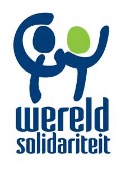
Rationally, we can conceive of an almost perfect society. But our emotions and self-centered desires get in the way. We regard and treat our family, friends and neighbors differently, better, than strangers. When people expand the circle of positive interest in others and equal treatment, there will be less discrimination and the world will be a better place. That’s where we need to go!
Task 3: What traits can help us increase the circle of positive interest, discriminate less, and make the world a more just place?
Scene 7. Letting Go
‘Detachment is not that you should own nothing, but that nothing
should own you’
Ali Ibn Abi Talib
When you can let things go, your decisions and actions are no longer tied to a particular outcome. When you stop worrying about the ultimate outcome and focus on the moment, you are guided by courage instead of worry or fear. Letting go of a desired outcome is so powerful because it leaves little room for fear. Courageous individuals have greater self-reliance, greater tolerance for imperfection, and they learn from their mistakes. They are good at letting go of something and are not attached or less attached to results.
Task 1: Goal setting is essential for successful projects. Why (organize and focus your efforts)?
Video: The Abundance of Letting Go | Dr. Alison Tan |
Iseli outlines three steps you can take to let go. These can be applied to results, persons, objects, emotions, experiences or circumstances. The first step is to gain clarity; clarity in your vision, intentions and goals. The second step is to fully commit and stand squarely behind what you are doing, whether that is a job, a relationship, an adventure, a hobby or a way of being. The third step is to detach yourself from the ultimate outcome, because after all, you can only influence your own behavior, not the economy or the weather, for example. Subconsciously, you then remain focused on achieving the goals. The more you give up your expectations, the more peace, joy and satisfaction you experience.
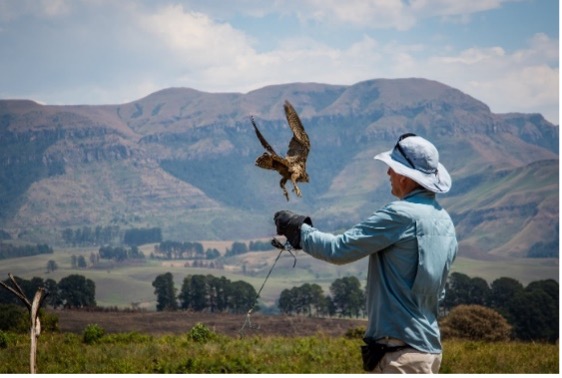
Unrealized expectations often lead to anxious thoughts, emotions and behaviors. By establishing a link to the ultimate outcome, you give away power.
Assignment 2: What things, people or results can you “let go” of?
You can reduce dependence on the outcome by making specific plans for obstacles you may encounter and increasing security through safeguards, tiger cages and safety nets . The more secure you feel, the more risk you dare to take. This greater security can come from gained familiarity with the situation, better knowledge of the problem, support from others and, importantly, daring to make (good) mistakes.
Task 3: With what three steps can you maintain the benefits of goal-setting and avoid the drawbacks? (Iseli,1,2,3)
Scene 8. Playfulness

The moment you start seeing life as non-serious, a playfulness, all the burden on your heart disappears. All the fear of death, of life, of love – everything disappears’.
Rajneesh
Playfulness is a subtle art that can simplify difficult decisions, conversations and actions that demand courage. This lightheartedness takes the edge off circumstances or decisions that might otherwise make you fearful. Playfulness brings light to darkness and opens the door for courage. By being playful, you are implicitly indicating that you have the courage to be vulnerable. Someone who is playful includes others. Playfulness is elegant, charismatic and intelligent!
Task 1: Humor and playfulness overlap. They sound simple, but what key attitudes and behaviors do they require? (not taking yourself seriously; being able to be aloof; being able to stand above something; being intelligent and witty).
Joke
Father looks at his son’s report card. ‘I’m missing an A,’ he says
‘an A for what’? asks son. ‘For the courage to show me such a report’!
Lachjekrom.com
There are seven ways to increase playfulness:
- Not taking yourself too seriously;
- Make people feel special. People will help you achieve success if you approach them with playful energy. When you consciously experience that the world and people want to help you and are not adversaries, your worldview and attitude changes. Love and kindness do the same;
- Playfulness is expressed in your body language. There is nothing more inviting, for example, than a spark in your eyes that indicates charisma and playfulness;
- A friendly invitation. Playfulness eases the pressure on interpersonal behavior. It helps you to be brave for something or someone without belittling them; and it is a gentle invitation for others to imitate you;
A good way to bring lightheartedness into a conversation is to exaggerate a situation. Do so with a friendly snort, not cynical. A second way is to mention the opposite positive of what you hear or observe negatively;
- Staying curious. Curiosity is a great stimulus to playful courage. It keeps life filled with wonder;
- Being playfully unapproachable. A slight attitude of irreverence. You are at peace with yourself and nothing others say about you can really affect you. You do what is correct and you do it your way. Do it playfully, not seriously or aggressively.
Video: Playfulness and Passion | Sadhguru
Task 2: Select one or more of the seven ways to begin to be more playful in life. Practice using humor, too!
Playfulness also gives you the opportunity to subtly tell others the truth. You can be playfully candid in a way that is polite and not offensive, kind and not arrogant. Playfulness has the magical power to disarm people quickly. Almost impossible to resist playfulness.
Tips for calling others to account for improper behavior:
- Use short, clear way to express disapproval; calm and direct; do it “playfully” if you can;
- Assume that offensive comments are meant to be sarcastic;
- Mention own discomfort rather than that of the perpetrator; place yourself on the same level;
- Practice with different types of response and select the most effective and best-fit;
- Enlist the help of sympathetic attendees.
- Empathize with the other person’s situation.
Task 3: Select an area in which you would like to address people more often (dog poop, environment, discrimination) and use (playfully) the tips above.
Scene 9. Flow

‘Move gracefully with life and let its waves carry you to the most magical, mystical and mysterious places’
Franziska Iseli
Flow is a magical state of mind that arises when people are strongly committed to the organization they work for, enjoy what they do, and bubble with energy in the process. This mindset contributes to our psychological and physical health and prevents burn-outs, bore-outs and other complaints. The degree of flow is characterized by the following three pillars: vitality, vital people bubble with energy, are tireless and possess great mental resilience and perseverance. Dedication, dedicated people are strongly committed to the work they do. They take pride in their work, perform it with great enthusiasm, and see the work they do as challenging and useful. Absorption, is being completely absorbed in work or other activity and often forgetting about time in the process. Passionate employees find it difficult to let go of work and do not have a 9 to 5 mentality. Unfortunately, less than 20% of the Dutch employees are in flow. Dutch students also score comparatively poorly in Europe.
Video: Flow by Mihaly Csikszentmihaly -Jun 19, 2015
Assignment 1: Do you feel you are in flow? Can you identify people-in-flow around you?
Everything is temporary and nothing stays the same. Adaptation is a secret power. If you want to live more boldly, you need to act consciously to become more comfortable with being inspired and engaged. When you are inspired and remain flexible, you don’t need to know how everything is going to turn out; you let your intuition guide you.
Certain qualities stimulate flow. Courage in itself also brings flow, because it brings greater commitment, optimism and enthusiasm. Good mentoring, trust in providence, appropriate challenges and taking good care of your physical condition promote a state of flow.
Assignment 2: Together with a buddy, could you give your thoughts on why so few Dutch workers and students are in flow!?
There are six practices that can help you live more engaged and expand your boundaries of courage:
- On occasion, exert pressure on others in an elegant and playful manner;
- Give in to others, not once, but several times if necessary;
- Behave like a chameleon in everyday matters; for example, be flexible in the way you talk, dress or behave, without neglecting your authentic self;
- Be flexible: go for option B, if option A doesn’t work;
- Let go of your inner control voice. People often have excessive, inner controls. The need for obsessive control usually stems from fear. Swoboda postulated that a person’s type of internal control voice corresponds to his/her fear pattern (perfectionist, saboteur, martyr, pessimist);
- Stay tuned, but let go of your control. You can then enjoy each moment, rather than worrying about the next or the one before. Know your destination, but be flexible about how you get there. And sometimes you may have to decide to change your destination.
Task 3: Which three of the above uses would best suit you in fostering your engagement and flow. How much courage does their application require?
Scene 10. Bystanders and heroism in emergencies
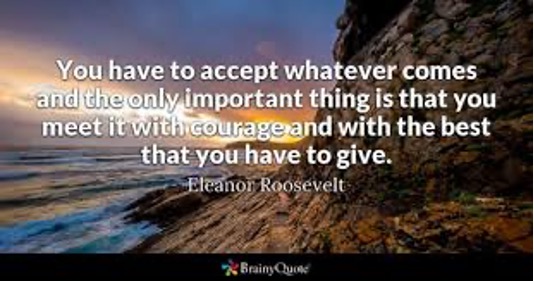
In emergency situations, you can have passive and active bystanders. Much has been written about why many remain passive bystanders in such events. They are often targeted, but the differences between passive and active bystanders are sometimes subtle. Individuals may switch categories on occasion.
The phenomenon whereby no one in a group of attendees is willing to intervene in a problematic event is called the “bystander effect. The larger the number of people present, the less likely they are to assist the person or persons in need. Passive bystanders tend to misinterpret each other’s calm appearance and see it as an indication that there is actually no emergency. When confused, people do not know exactly what is going on, which creates uncertainty. People are more likely to take action in the face of an obvious accident.
Passive bystanders do not have a willingness to take action. They feel that they have little control over their lives and that there is little they can do to influence external events. They think more than active bystanders in terms of group identity and see themselves often as members of exclusive groups. Thus, there may be several reasons why passive bystanders do not intervene: fearful, confused, compelled, or deliberately indifferent, and able to convince themselves that it is not their responsibility to intervene.
Active bystanders and morally courageous people have an altruistic perspective and feel connected by a common humanity; in doing so, they see others not as outsiders or strangers but as fellow human beings! These individuals share deep personality traits, such as unbridled empathy for all. The self-image of active bystanders is all-encompassing and is accompanied by a great readiness for action. They are predisposed to an extensive network of relationships through attachment to others and feelings of responsibility. These qualities are usually developed at an early age by parents who were tolerant, caring, and empathetic.
If bystanders are aloof and cowardly because of the group event, the reverse can also take place: jumping in by encouragement and example and also becoming courageous: the banality of heroism! This phenomenon suggests that we are all potential heroes, capable at some point of performing heroic deeds.
If you can muster the motivation and courage to do so, be an active bystander. If you see something improper happening, make a discreet choice to respond to the behavior involved: with entitlement, reporting, corrective humor, providing information, etc.
One of the most effective ways when verbally racist remarks are made is to “retort,” to turn the phrase or make equivalent comment about the speaker. That humorous or sarcastic retort then has a vindictive message. There is also the possibility of direct response, which need not be aggressive or confrontational. If the event escalates and danger threatens, you can distract spontaneously, for example by telling a white lie. Delegation, enlisting the support of others present, is another possibility. If it is not possible to react immediately, you can do so later, in person or otherwise. If you don’t respond, the actor thinks you agree with him.
Task 1: Reason how to change from a passive to an active spectator.
Perhaps you have the will to behave heroically on occasion, even more courageously than an active bystander!?
Heroism must have some form of present or future sacrifice or risk. This may be some form of physical danger or meaningful social sacrifice. In high-level moral courage, the trust often exists more in principles and values than in persons. The act of heroism can be active or passive (nonviolent resistance). And finally, an act of heroism can either be instantaneous or extend over an extended period of time.
Video: TEDxMidwest – Phil Zimbardo – Heroes –
Franco and Zimbardo believe that a key factor that can encourage heroic action is the stimulation of heroic imagination, including the possession of a personal heroic ideal. It is the ability to imagine physically or socially risky situations, to grapple with the hypothetical problems these situations raise, and to face one’s actions and consequences. By considering these issues in advance, the person is better prepared to act when the opportunity arises. There are opportunities for courageous or heroic behavior in the social sphere, for example, discrimination, human trafficking, and substance abuse.
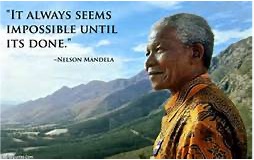
Beyond personal considerations, our society needs to look at ways to encourage heroic imagination in all its citizens, especially among young people.
If we check the stories of altruism, moral heroism and courage, there seems to be nothing more important than receiving a highly loving, strongly altruistic upbringing with role modelling in the early years.
Task 2: What conditions are important for heroic behavior? (upbringing, role model, imagination, daily actions)
Do courageous things continuously, at home and at work. If you want to act heroically, you can prepare for it by doing a small, altruistic act every day. If we continually strengthen our ”altruistic muscle,” we are likely to act heroically when the opportunity arises.
Task 3: If possible, read Samuel P. Oliner’s book ‘The altruistic personality’, 1988
Scene 11. Engagement and development.
‘If at first you don’t succeed, try, try and try again!’
Thomas H. Palmer
Behaving courageously or becoming courageous is ideally not an ad hoc event but a commitment, which you work on throughout life.
In addition to the biological, you have personality traits that play a role. The Roots of Moral Courage talks about the connection between whether or not we act courageously based on personality traits. First of all, there is self-efficacy, the confidence in our own capacity to face challenges. There is also self-esteem, which can also influence the assessment of our ability to successfully take risks. Stress level is also a factor, as is the degree of openness to new experiences. All four of these characteristics can be developed and shaped with practice and with help. Low self-esteem and stress, for example, can be worked on with therapy. And much can be done to develop a greater openness to new experiences.
Sonnenberg lists many characteristics of courageous individuals: self-confidence, strong beliefs, integrity, leadership, compassion, objectivity, resilience, intuition, and decisiveness. One could further mention: tolerance for ambiguity, positivism and problem-solving orientation. You have to be able to let go in order to be more carefree. And perfection is certainly not a requirement; in fact, you have to be ‘perfectly imperfect’ and dare to make mistakes. According to Iseli, kindness, love, playfulness and engagement also play a role in developing and employing courage. For playfulness she gives seven ways to stimulate it, and for engagement six (see scenes 8 and 9).
Self-confidence and trust in others and in “providence” are an important incentive, if not prerequisite, for courage. Your reliability to others can be promoted by your having confidence in others.
Support from others and role models can be a great stimulus for courageous behavior.
Task 1: From the multitude of traits and behaviors that promote courage, you can select a few to apply to yourself. After enough successes, you can take the next few.
Basic postures.
Be aware of your values and patterns of behavior. Live by your own principles and do so with elegance, integrity and dignity. If you formulate your “courageous” decision to include values, you are much more likely to act in accordance with them. Lead yourself and others in a courageous way. Be aware of the tendency toward negativism, and correct it as much as possible, e.g., through objective data. Give equal time to positive and negative scenarios; and when dealing with negative ones, try to reframe them in a more positive way. Be aware of your vulnerabilities; they are essential to making better choices (Brooke Deterline).
Use the power of commitment and your intentions. Once you set your internal compass, you can put all your energy into finding a solution. When we commit, we can become creative.
Commit to being courageous and consider “impossible” a challenge. Everything is temporary, including the impossible.
Video: Schlechty’s Levels of Engagement – Dec 4, 2017. 4 min.
Take away underlying fears; people who are afraid to do something often have little or no confidence. The lack of this manifests itself in a variety of ways, including procrastination, perfectionism, and impostor syndrome. Exposing our vulnerabilities can have stimulating results. By identifying what we are truly afraid of, we reduce our fear of the situation, which encourages us to take action.
According to gratitude guru Brother David Steindl-Rast, a grateful person knows little or no fear.
By putting yourself in uncomfortable situations, through comfort modulation, you develop yourself. Start to feel less comfortable! It takes courage to get outside your comfort zones. But it’s those very moments that stretch you and help you become a more developed and courageous version of yourself. When you get into the habit of making courageous decisions, you experience them becoming less frightening. Three ways to feel uncomfortable:
- Don’t shy away from difficult conversations. Feel uncomfortable and seize the courage to face difficult discussions that will move you (and others) forward;
- Change the (intangible) circumstances. It takes courage to give up something that is good in order to try to achieve something better. Welcome contradictions. Get uncomfortable by pushing yourself into unfamiliar experiences. Opposites inspire creativity and expand your mind.
- Practice going outside your comfort zone: practicing consistent, intentional, small mood acts can have a cumulative effect. Every day, do something that challenges, that makes you uncomfortable, or scares you.
- Take initiative, give confidence, tell the truth and make mistakes. Invite others to join you. Courage performs when you work at it. Do it now!
Tactical approaches
Courage is a skill; the more you practice courage, the braver you become. Specialists unanimously insist on it: constantly and consciously perform acts of courage. Stay on track, do not give up. Exceed your own expectations.
Take pole position. Remain thoughtful (mindful), critically evaluate each situation for its possible action for courage and heroism, using your personal moral compass as a guide. Pay attention to negative feelings and considerations first and experience them as such. Expose the vulnerabilities. Second, fill your brain with courageous thoughts. Realize that you are not alone; sharing fear with others can be a valuable tool in the face of a challenge.
Confront fear as often as you can. Fear is not always legitimate and can sometimes be more excitement and thrill rather than a warning that you are about to do something dangerous. Legitimate fear tends to get us out of a predicament quickly; unhelpful fear, on the other hand, makes us hesitant rather than decisive. Normalize fear and use its energy.
Pay attention to your body; anxiety physically exhausts and these physical effects reinforce the mental.
Task 2: Think calmly about the various basic attitudes and tactical approaches to employing courage. Legion of possibilities and options. Take it easy!
Parable of the candle, for heroes and idealists.
Your personal moral courage can make a huge difference in the face of violence that is inflicted on many of humanity’s ethical standards. The parable of the candle shows the enormous power of a single good example. In that parable, light is not the opposite of darkness, but its absence. We invoke light and darkness as our primary metaphor for Good and Evil. We imagine that they too are opposites. Wrong is not the opposite of Right, but its absence.
A single candle can nullify the darkness of an entire room, and a single life, accomplished in the light of goodness and moral courage, can make a huge difference in overcoming the dark void that calls itself Evil, Darkness, Doubt, Cowardice or Fear. If Evil is really, in a fundamental way, the absence, rather than the antithesis of The Good, does it surprise anyone that each of us – expressing our highest sense of moral worth, living that fully and passing it on to others, can really change the world?
Task 3: Create a plan in four phases, as follows:
- Commit to bold action; remain consistent and patient;
- Elegance derives its power from courage, playfulness and distance.
Start by filling yourself up with courage. Where are you being too cautious? What facets of your life have become too easy or even too ‘boring’. Which of your fears have ‘lapsed’ or become too much bottled up?

Data
Books
- Gratitude Project. New Harbinger Publications. 2020. Where. Chapter 25 (p.223) the article (conversation) contains ‘Is Gratitude the Path to a Better
- Bill Treasurer. Courage goes to work. How to build backbones, boost performance and get results, 2008.
- Kidder, Rushworth M., Moral Courage, 2004.
- Brown, Brené. Daring Greatly. How the Courage to be Vulnerable Transforms the Way We Live , Love, Parent, and Lead. Penguin Books, 2015.
- Swoboda, Kate.The Courage Habit, 2018
- Iseli, Franziska. The Courage Map.
- Roumen, Ton. Embrace Yourself. Berne Media, 2019.
Articles
- Terry, Ruth. How to Be an Active Bystander When You See Casual Racism, Oct. 29, 2020
- Schwartz, Arthur. Ethical workplace: Cracking the courage code,character.org. Jun 14, 2016
- Taulbert, Clifton. Courage: A Backpack Necessity for the 21st Century Workplace. Character. org
- Sonnenberg, Frank. Ten Elements of Courage.
- Brown, Lachlan. 5 steps to help you overcome fear. October 28, 2020.
- Brown, Lachlan. How to be brave: 15 steps to let go of fear. June 29, 2018
- Deterline, Brooke. How to Cultivate Ethical Courage. In the face of internal and external pressure, these three tips can help you stand up for your values.
- Kets de Vries, Manfred F. R., How to Find and Practice Courage.
- Kelly McGonigal How to Transform Stress into Courage and Connection. May 13, 2015
- Navilon, Genefe. 100+ brutally honest quotes on fear that will give you courage
- Sanderson, Catherine A. Six Tips for Speaking Up Against Bad Behavior. September 30, 2020
- Franco, Zeno and Zimbardo, Philip. The Banality of Heroism. September 1, 2006
- Monroe, Kristen Renwick The Roots of Moral Courage. Why do some people risk their lives to help others? June 23, 2010 .
- Carter, Christine. Three Tricky Ways to Cultivate Courage. | May 21, 2015
- Keltner, Dacher and Marsh, Jason. We Are All Bystanders. But we don’t have to be. September 1, 2006.
- Pury, Cynthia . When Courage Goes Bad.
- Suttie, Jill Where do heroes come from? GGSC, August 28, 2013.